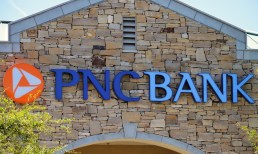An emphasis on self-expression following the COVID-19 pandemic is driving consumers to increase purchases of hair dyes, especially brighter colors, executives at beauty supplier Sally Beauty said on Thursday (July 29), pushing the company to strong sales growth in its third quarter.
Purchases of vivid hair colors are centered on Generation Z customers, CEO Chris Brickman said, but Sally Beauty has seen consumers of all ages, including those in their 70s and 80s, using brighter colors. “I just think there’s a desire for self-expression that’s driving this, and a feeling, like, hey, you know, I should be free to do what I want, where I work, where I go to school, whatever,” he said.
Officially, consolidated net sales reached over $1 billion in the three months ending June 30, with same-store sales increasing nearly 45 percent year over year. Sally’s hair color category increased 36 percent compared to 2020, and vivid colors grew by 52 percent in the U.S. and Canada.
Other categories also saw jumps as consumers returned to pre-pandemic patterns: Haircare products were up 74 percent and nail products were up 47 percent at Sally Beauty. Haircare was up 65 percent at Beauty Systems Group (BSG), the division that sells directly to licensed beauty professionals.
Brickman expects consumer demand for vivid hair colors to continue, with a new Sally Beauty vivid color line slated to launch later this calendar year. While vivid hair coloring makes up just 10 percent of the overall hair color business in the U.S., it comprises 29 percent of the hair color business for Sally Beauty.
“I say there’s plenty of headroom for vivid color to grow, and Sally’s just become the destination for it,” the CEO told analysts and investors. “And it’s great because it’s nice to see that we’re over-indexing now with Gen Z consumers who are coming into that category.”
Advertisement: Scroll to Continue
Expanding Omnichannel Capabilities
Sally Beauty has spent the last several years upgrading its entire operating infrastructure, efforts that were accelerated as COVID-19 bore down last year.
The retailer aims to have eCommerce sales make up 15 percent of its total sales volume in the coming years; last quarter, digital sales reached $71 million, approximately 7 percent of Sally’s total net sales.
Sally recently began testing rapid delivery at Sally Beauty stores, which is set to expand in the next one to two quarters, and now has rapid two-hour delivery across its BSG footprint.
Sally Beauty is also in the early stages of reducing its store portfolio, with the company currently experimenting with the closure of 70 Sally Beauty locations and 20 BSG locations to see how consumers react and whether sales transfer online or to another retail location.
“We have a significant opportunity to continue leveraging our digital capabilities while optimizing the store portfolio to deliver a superior omni experience for the customer,” Brickman said. Once the company has more data about how store closures impact sales, likely in November or beyond, the CEO said the retailer will cement how many of its 5,000 Sally Beauty and BSG locations to close.
Speed is of the essence for Sally Beauty’s omnichannel makeover, as larger retailers embrace the post-pandemic beauty trend with new shop-in-shops and beauty partnerships. Many beauty brands are increasingly focused on direct-to-consumer (D2C) sales, which could leave brick-and-mortar-based Sally Beauty behind if digital sales don’t pick up.
Uncertainty Ahead
With the COVID-19 Delta variant making headlines and spreading rapidly around the world, Sally Beauty is expecting its fourth-quarter net sales to be relatively flat compared to both 2019 and 2020.
Additionally, the company has been dealing with persistent supply chain issues, within both its production supply chain and the transportation lines from vendors. Brickman expects the situation to “be even more aggravated” in the next four to eight weeks, especially as many retailers begin loading up for the holiday shopping season, putting more stress on an already backed-up supply chain network.
“We’ve been making a lot of progress throughout this quarter, and our worry is that it’s going to be tougher to make progress and maintain service levels this quarter,” Brickman said. He added that he expects the Delta variant to be more of an issue for Sally Beauty in August and September than it has been in July.
Sally Beauty currently has a market capitalization of $2.5 billion. Shares of the company have risen 69 percent year to date compared to the S&P 500’s 17 percent rise over the same period.




